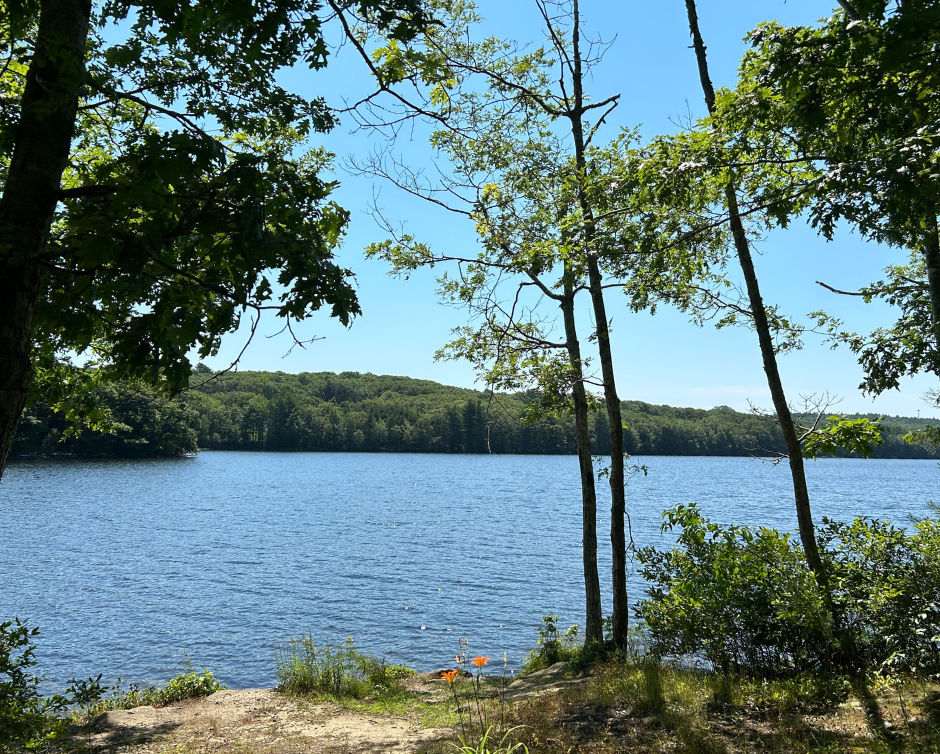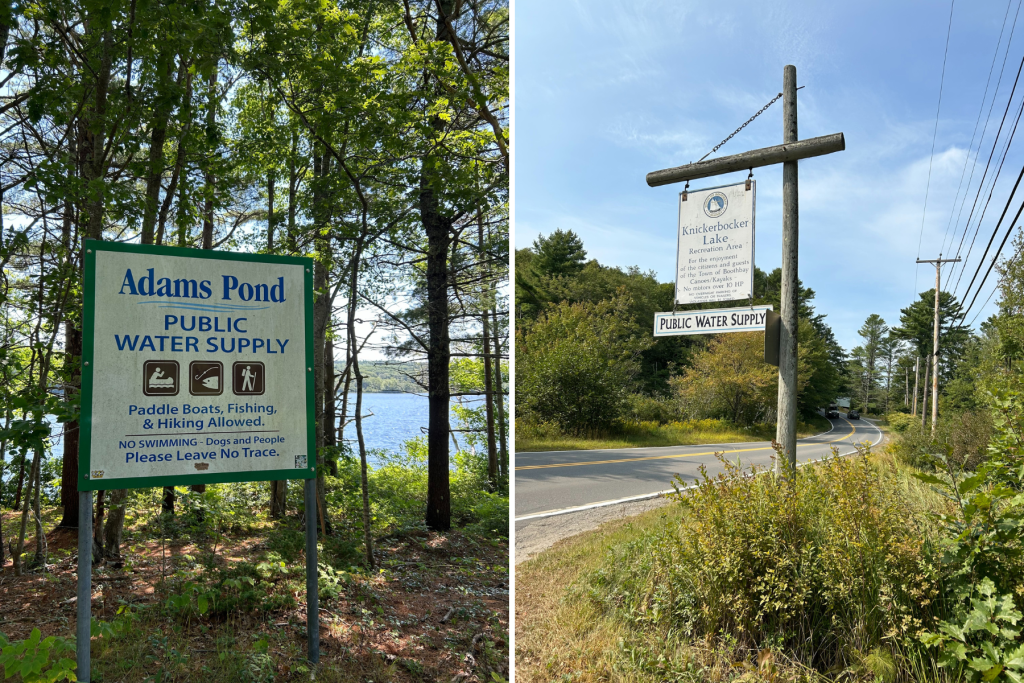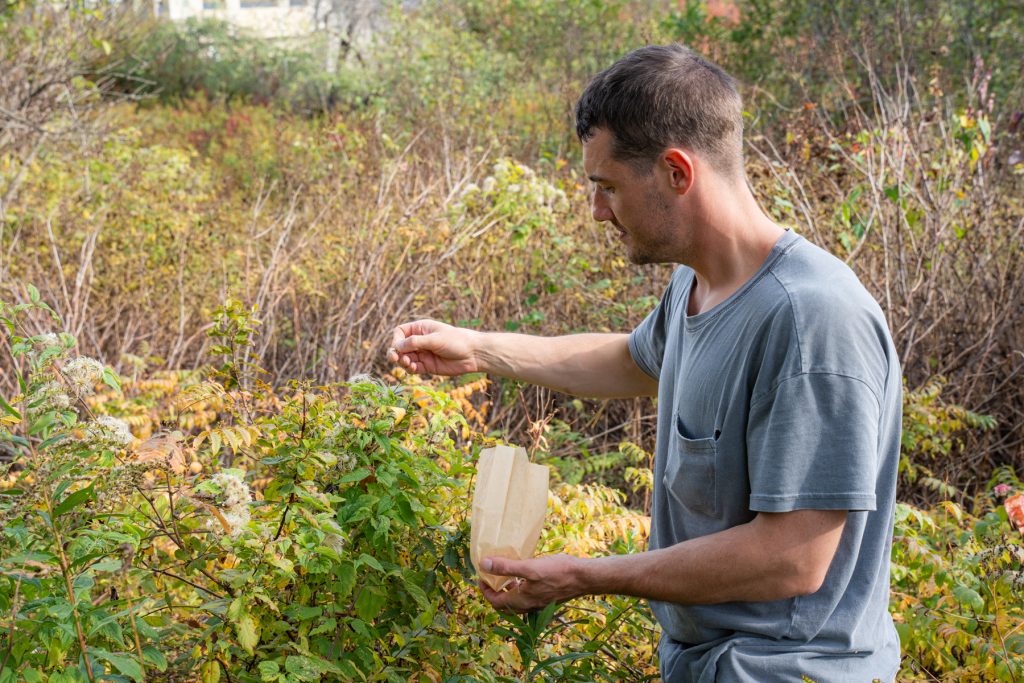The Importance of Watersheds
Did you know that wherever you are, you’re in a watershed? Watersheds are everywhere around us, connecting all of us to nearby rivers, lakes, ponds, and coastlines. But what exactly is a watershed, and why does it matter?
A watershed is the land surrounding a water source that drains into a body of water. The way we care for this land and the activities that happen on it have a huge impact on water quality and everything connected to it. While hundreds of watershed acres in our community are currently protected, most are not.
Studies indicate we need to conserve much more watershed land to protect water quality for the future. Without careful stewardship, water quality degradation will affect water treatment costs, property values, recreation, our tourism economy, and our quality of life.

Water Cycle Overview
To understand how a watershed works, it’s helpful to understand the water cycle.
The water cycle is essential to our survival. Rain falls, snow melts, and water that isn’t absorbed by the earth or put directly into a body of water travels over and through the land until finally arriving at a water source. This part of the water cycle is called runoff. The water source that runoff meets could be a pond, lake, river, or ocean. From there, the sun’s bright rays cause evaporation, eventually leading back to rain, and the cycle continues.
Landowners can manage their land in different ways to maintain safe water quality while considering watershed conservation.
Planting Native Plants
Planting native plants can be a key way to support natural land protection. Native plants are those species that have evolved in a particular region and are adapted to the local environment. They play several critical roles in the health of watersheds:
1. Erosion Control:
Native plants have deep root systems that help stabilize soil, reducing erosion caused by rain and runoff. This is particularly important in watersheds, where soil erosion can lead to sedimentation in rivers and lakes, negatively impacting water quality and aquatic habitats. Erosion has become more of an issue as storm surges fueled by the changing climate hit Maine.
Popham Beach State Park experienced substantial loss during recent storms, losing up to 10 ft of dunes in areas. To mitigate future damage, the park collected Christmas trees to bury in the sand, hoping to slow down more erosion. They expect the trees will act like a root system holding the sand in place.
2. Water Filtration:
The root systems of native plants help filter pollutants and extra nutrients from water as they flow through the soil. This natural filtration process improves water quality and protects aquatic ecosystems from harmful runoff.
3. Habitat for Wildlife:
Native plants provide essential food and habitat for various wildlife species, including birds, insects, and mammals. These organisms contribute to the watershed’s biodiversity and play crucial roles in pollination and pest control.
4. Flood Mitigation:
Native plants help mitigate flooding in watersheds by absorbing rainfall and slowing the flow of water. This is particularly beneficial in developed areas where impervious surfaces like roads and buildings increase runoff.
5. Climate Resilience:
Native plants are adapted to local climate conditions, making them more resilient to changes in temperature and precipitation. This resilience is crucial as climate change continues to impact water availability and ecosystem health.
Despite their importance, native plants face many challenges. Invasive species, urban development, and climate change can damage local ecosystems and threaten the survival of native flora. Conservation efforts are essential to protect these species and restore their habitats.

The Impact of Impervious Surfaces
An area of developed land can also be known as an “impervious surface.” Examples of impervious surfaces include parking lots, paved roads, roofs, and any other infrastructure that does not allow water to be absorbed into the earth. These surfaces can cause problems for the watershed because:
1. Increased Runoff:
Impervious surfaces prevent water from soaking into the ground, leading to increased surface runoff, which can result in flooding and erosion.
2. Water Quality Degradation:
Runoff from impervious surfaces often carries pollutants, including:
– Sediment: Soil erosion can lead to sediment entering water bodies, affecting aquatic habitats.
– Nutrients: Fertilizers, pet waste, and other nutrients can wash into rivers and lakes, causing algal blooms and eutrophication.
– Chemicals: Oils, heavy metals, and other road contaminants can pollute water sources.
3. Habitat and Biodiversity Loss:
The development of impervious surfaces often leads to habitat fragmentation and loss, impacting local wildlife by reducing natural habitats and isolating populations. In other words, it is harder for species to find mates and food. Increased runoff, water quality degradation, and habitat loss contribute to declining biodiversity within watersheds. Species that rely on specific habitats may struggle to survive as their environments change.
Local Water Sources
The Boothbay Region has two clean drinking water sources: Adams Pond and Knickerbocker Lake. The Boothbay Region Water District serves the towns of Boothbay, Boothbay Harbor, and Southport. This means that every restaurant, brewery, and business in these towns, as well as the majority of residents, are reliant on these water sources. The Clean Drinking Water Initiative was formed to conserve land within the local watersheds to protect access to clean drinking water on the Boothbay Peninsula.
This post was written in collaboration with Bailey Charron from the Boothbay Region Clean Drinking Water Initiative, whose mission is to forever safeguard the Boothbay Region’s public drinking water supply through land conservation, education, stewardship, and community collaboration.


